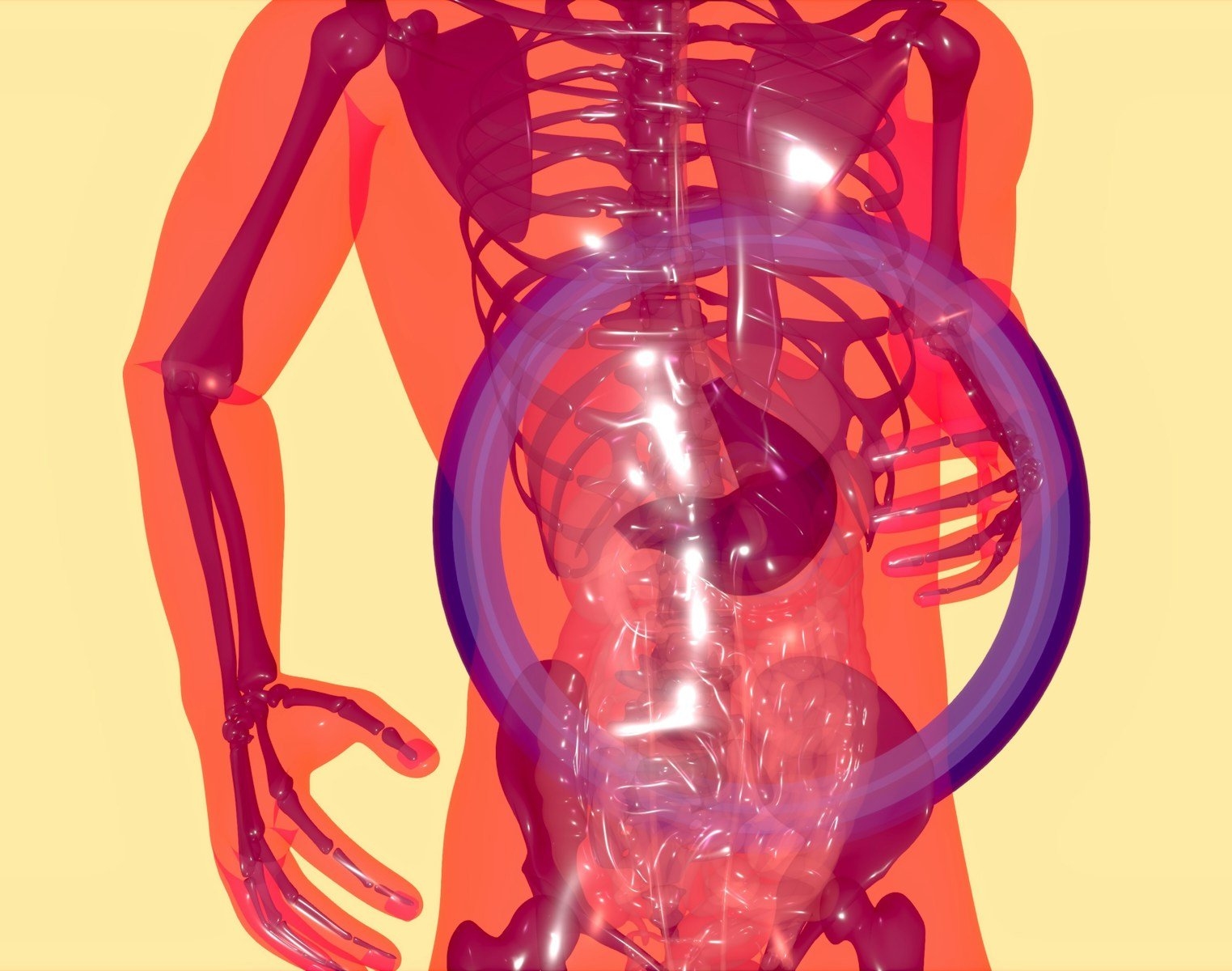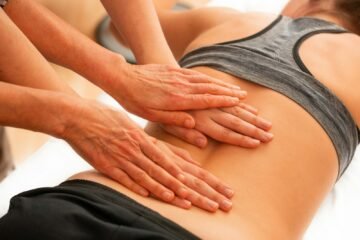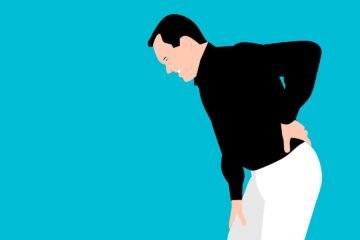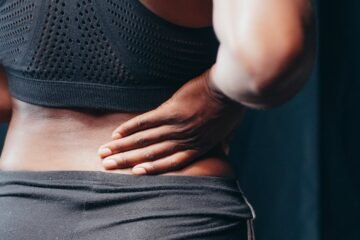Liver-related back pain can be concerning, especially if you’re unsure of the cause. This guide will help you understand the possible reasons for liver pain that radiates to the back, how it feels, and effective relief options. As a medical professional, I often see patients experiencing this type of pain, which is usually a symptom of liver health issues.
What Does Liver Back Pain Feel Like?
Liver back pain generally feels like a dull, aching pain or tenderness. It can be sharp in certain cases, especially after physical strain, eating certain foods, or drinking alcohol. This discomfort is often felt in the right side of the back, just below the ribs, and may worsen at night or when lying down.
Common Liver-Related Conditions Causing Back Pain
Some liver conditions that often lead to back pain include fatty liver disease, liver inflammation, liver cirrhosis, and liver enlargement. The location and intensity of pain vary depending on the specific liver issue, making it essential to identify the underlying cause.
Liver Back Pain Location: Where Is It Felt?
The liver is located in the upper right side of the abdomen, which means liver-related pain is typically felt in the upper right side of the back. However, the pain can sometimes radiate to the right shoulder blade or extend towards the lower back.
Table: Liver Conditions and Related Back Pain Locations
| Liver Condition | Common Pain Location | Other Symptoms |
|---|---|---|
| Fatty Liver | Right side, below ribs | Fatigue, discomfort in upper abdomen |
| Cirrhosis of the Liver | Right side, may spread to back | Nausea, weight loss, jaundice |
| Enlarged Liver (Hepatomegaly) | Right side, extending to back | Bloating, fullness, abdominal pain |
| Inflamed Liver (Hepatitis) | Right side, may worsen at night | Fever, fatigue, joint pain |
| Liver Pain After Drinking | Right side, radiating to back | Nausea, dehydration, headache |
This table can help you identify which liver condition might be causing your back pain and whether additional symptoms are present.
Fatty Liver and Back Pain: Understanding the Connection
What Is Fatty Liver Disease?
Fatty liver disease occurs when excess fat builds up in the liver. It can be related to diet, obesity, or excessive alcohol use. In my practice, I’ve observed that patients with fatty liver back pain often describe it as a persistent ache in the upper right side of their back.
Fatty Liver Back Pain Right Side vs. Left Side
The liver is primarily located on the right side of the body, so pain due to fatty liver is typically felt on the right side of the back. However, if the condition worsens or affects nearby organs, some discomfort may radiate to the left side.
For more information on managing fatty liver, you can refer to trusted sources like the American Liver Foundation, which provides comprehensive guidelines on lifestyle and dietary changes.
Cirrhosis of the Liver and Back Pain
Cirrhosis is an advanced stage of liver disease marked by scarring of the liver tissue, which can lead to significant back pain. This pain is usually persistent and may radiate from the liver area to the lower back.
Symptoms of Cirrhosis-Related Back Pain
Patients often report that cirrhosis of the liver back pain is accompanied by symptoms like fatigue, weight loss, and jaundice. Unlike other liver conditions, cirrhosis-related pain may become more severe as liver function continues to decline.
Swollen and Enlarged Liver Back Pain
An enlarged liver, or hepatomegaly, can cause a sensation of fullness or discomfort in the right side of the back. This condition often leads to swollen liver back pain, which can worsen when sitting or lying in certain positions.
Causes of Liver Enlargement
Several factors, such as viral infections, genetic disorders, or excessive alcohol use, can cause liver enlargement. Patients with hepatomegaly often feel pain radiating to the back, especially after eating large meals or drinking alcohol.
Why Does Liver Back Pain Occur at Night?
Many patients experience liver back pain at night, which may be due to the body’s natural processes. The liver works to process and detoxify substances at night, potentially increasing discomfort in those with liver conditions. Additionally, lying down can put pressure on the liver area, worsening pain.
Liver Back Pain After Drinking: What You Need to Know
If you frequently experience liver back pain after drinking, this may indicate that your liver is struggling to process alcohol. Alcohol can be taxing on the liver, especially in cases of liver disease or inflammation. This type of pain is often accompanied by symptoms like nausea, dehydration, and headache.
Tips to Relieve Liver Back Pain After Drinking
To help ease pain and avoid further liver damage:
- Limit Alcohol Intake: Reducing alcohol consumption can significantly lessen liver-related back pain.
- Stay Hydrated: Drinking water can help flush toxins and reduce the burden on your liver.
- Rest: Giving your liver time to recover can reduce pain and help you feel better overall.
How to Relieve Liver Back Pain: Tips and Treatments
Liver back pain can be managed through a combination of lifestyle changes, dietary adjustments, and pain-relief strategies. Here are some methods that I commonly recommend to patients:
1. Warm Compress
Applying a warm compress or heating pad to the painful area may relieve some liver-related back pain. Heat can help relax tense muscles and reduce pain in the affected area.
2. Avoid Fatty and Processed Foods
Reducing fat intake can prevent further strain on the liver, especially if fatty liver disease is the underlying cause. Instead, focus on a liver-friendly diet rich in fruits, vegetables, and lean proteins.
3. Engage in Gentle Physical Activity
Low-impact exercises, such as walking or stretching, can improve circulation and reduce back pain. Physical activity can also promote liver health by aiding in weight management, particularly for those with fatty liver disease.
For additional support on liver health, consider exploring resources provided by the National Institute of Diabetes and Digestive and Kidney Diseases (NIDDK).
When to Seek Medical Help for Liver Back Pain
If you experience severe, persistent, or worsening liver back pain, it’s crucial to consult a healthcare provider. Pain that does not improve with rest or is accompanied by other concerning symptoms may indicate a serious condition, such as advanced liver disease.
Key Signs to Watch For:
- Persistent Pain: Pain that continues for more than a week.
- Jaundice: Yellowing of the skin or eyes, a sign of liver distress.
- Unexplained Weight Loss: Sudden weight loss can indicate serious liver issues.
- Dark Urine and Pale Stools: These may be signs of liver dysfunction.
Also Read: Tylenol for Back Pain: An In-Depth Guide
Enlarged and Swollen Liver: Causes and Symptoms
An enlarged liver, or hepatomegaly, is often a sign of underlying liver issues, such as fatty liver disease, hepatitis, or even liver cancer. Swelling can cause discomfort or pain, often radiating to the back. While not always painful, an enlarged liver can press against surrounding organs, leading to a feeling of fullness or tenderness.
Common Causes of Liver Enlargement
- Excess Alcohol Consumption: Chronic drinking is a leading cause of liver enlargement, contributing to fatty liver, hepatitis, and cirrhosis.
- Viral Infections: Hepatitis A, B, and C can lead to liver inflammation, often resulting in an enlarged liver.
- Non-Alcoholic Fatty Liver Disease (NAFLD): Obesity and poor diet can cause fat to accumulate in the liver, leading to swelling and inflammation.
- Cancer: Liver cancer or metastasized cancers from other organs can cause the liver to enlarge as it tries to fight off cancer cells.
Liver Back Pain at Night: Why It Happens and Tips for Relief
Nighttime liver back pain may worsen due to body position and the liver’s detoxification processes, which are more active in the evening. For some, lying down can increase liver-related pain by placing extra pressure on the liver and surrounding organs.
Tips to Alleviate Nighttime Liver Back Pain
- Sleep on Your Left Side: This position may alleviate some pressure off the liver, which sits on the right side.
- Use a Supportive Pillow: Placing a pillow under your right side can help keep pressure off the liver area.
- Avoid Late Meals: Eating heavy or fatty foods close to bedtime can strain the liver, potentially increasing pain at night.
Cirrhosis of the Liver: Managing Chronic Pain
In advanced liver disease, such as cirrhosis, scar tissue replaces healthy liver tissue, leading to compromised liver function. Patients with cirrhosis often experience liver back pain, along with other symptoms such as fluid retention, muscle wasting, and jaundice. In my practice, I’ve seen that managing this pain requires a holistic approach to minimize liver stress.
Lifestyle Recommendations for Cirrhosis-Related Pain
- Limit Salt Intake: Reducing salt can help manage fluid retention, a common complication in cirrhosis.
- Eat Balanced Meals: Focus on nutrient-dense foods that are easy on the liver.
- Avoid Alcohol Entirely: Even small amounts of alcohol can exacerbate cirrhosis and worsen pain.
- Engage in Gentle Exercise: Activities like stretching or walking can help reduce muscle stiffness and support liver health.
For more about managing cirrhosis, check the American Liver Foundation’s cirrhosis guide, which offers detailed recommendations.
Natural Remedies for Liver Back Pain Relief
While medical treatment is essential, certain natural methods can help manage mild liver back pain, especially for conditions like fatty liver disease. Below are some of the natural remedies I commonly recommend to patients dealing with liver back pain.
1. Turmeric
Turmeric is a powerful anti-inflammatory and antioxidant. Studies show it can help reduce liver inflammation and may aid in alleviating liver-related pain. Adding turmeric to your diet or taking a turmeric supplement may offer some relief.
2. Milk Thistle
Milk thistle is often used to support liver health. It contains a compound called silymarin, which has antioxidant and anti-inflammatory properties. Milk thistle supplements can be taken daily to promote liver function and potentially reduce pain.
3. Ginger Tea
Ginger has anti-inflammatory properties and can aid digestion, reducing strain on the liver. Drinking ginger tea can help relieve liver-related discomfort and ease indigestion, which is sometimes associated with liver disease.
4. Warm Compress
Applying a warm compress to the affected area can relax muscles around the liver and alleviate pain, especially for those experiencing liver back pain right side.
When to Seek Medical Treatment for Liver Back Pain
While some liver back pain can be managed with lifestyle changes and over-the-counter treatments, it’s essential to know when to seek medical help. Persistent or severe pain, especially if it’s accompanied by other symptoms like jaundice, nausea, or weight loss, should be evaluated by a healthcare provider.
Symptoms That Warrant Immediate Medical Attention
- Yellowing of the Skin or Eyes (Jaundice): A common sign of liver distress.
- Swelling in the Abdomen: May indicate fluid retention or liver enlargement.
- Severe Pain That Worsens Over Time: Could be a sign of an advanced liver condition.
- Confusion or Drowsiness: Potential symptoms of liver encephalopathy, which can occur in severe liver disease.
For more guidance, you can visit the National Institute of Diabetes and Digestive and Kidney Diseases (NIDDK), which provides reliable information on liver conditions and treatments.
How to Support Liver Health and Prevent Liver Back Pain
Maintaining liver health is crucial for overall well-being. Here are some liver-friendly practices to prevent liver back pain and support long-term health.
1. Eat a Balanced Diet
Focus on a balanced diet rich in fruits, vegetables, lean proteins, and whole grains. Foods high in antioxidants, such as berries, green leafy vegetables, and nuts, can help protect the liver from damage.
2. Exercise Regularly
Regular exercise helps control weight, reducing the risk of non-alcoholic fatty liver disease. Low-impact exercises like walking, swimming, and cycling can help improve liver function and decrease inflammation.
3. Limit Alcohol Intake
Excessive alcohol consumption is one of the leading causes of liver damage. If you drink, do so in moderation, and be mindful of any liver-related pain you experience after drinking.
4. Avoid Overusing Painkillers
Certain over-the-counter painkillers, particularly acetaminophen, can be toxic to the liver if taken in excess. Always use painkillers as directed, and avoid combining them with alcohol.
5. Get Regular Screenings
For those at risk of liver disease, regular check-ups can detect liver abnormalities early. Blood tests like liver function tests (LFTs) can monitor liver enzymes, bilirubin levels, and other indicators of liver health.
Frequently Asked Questions About Liver Back Pain
Where is Liver Back Pain Located?
Liver back pain is usually felt on the right side of the back, just below the rib cage. In some cases, the pain may radiate to the right shoulder or lower back.
What Does Liver Back Pain Feel Like?
Liver-related back pain is often described as a dull ache or sharp, shooting pain, depending on the liver condition. It may intensify after meals or following alcohol consumption.
Can Fatty Liver Cause Back Pain?
Yes, fatty liver disease can cause back pain, particularly on the right side. As fat builds up in the liver, it can cause inflammation, which may lead to discomfort that radiates to the back.
How Long Does Liver Back Pain Last?
The duration of liver back pain varies depending on the cause. Pain from temporary liver inflammation may subside within days to weeks, while pain from chronic liver conditions like cirrhosis can persist.




